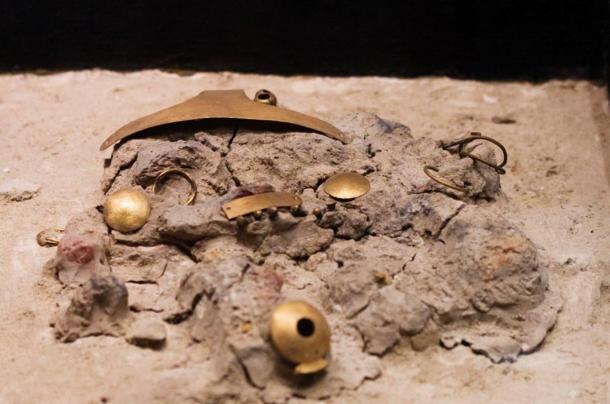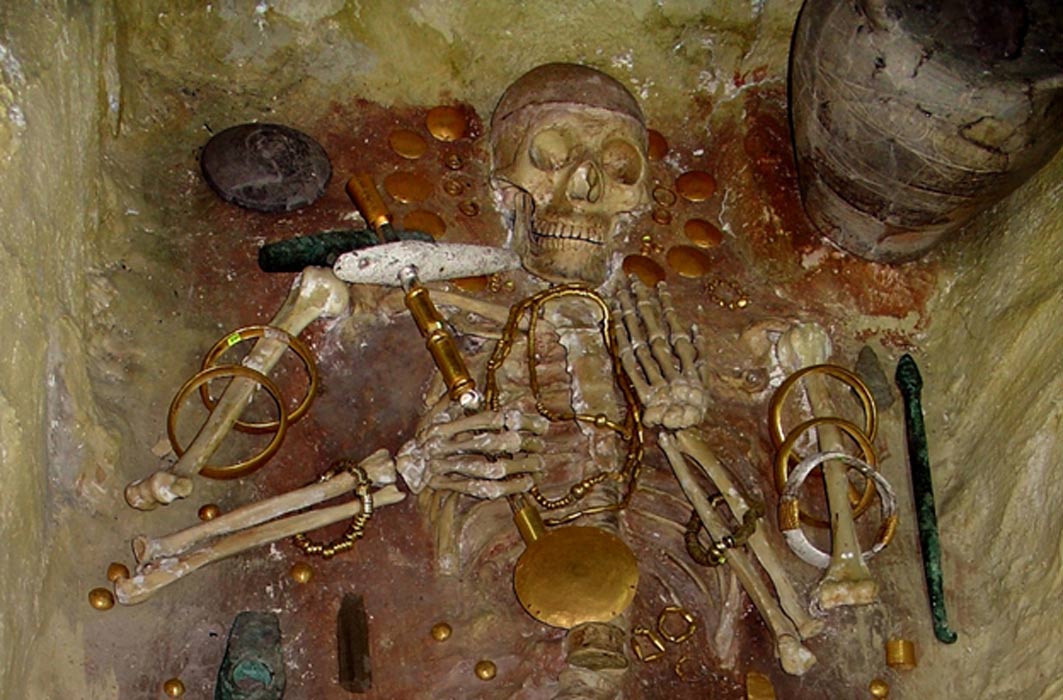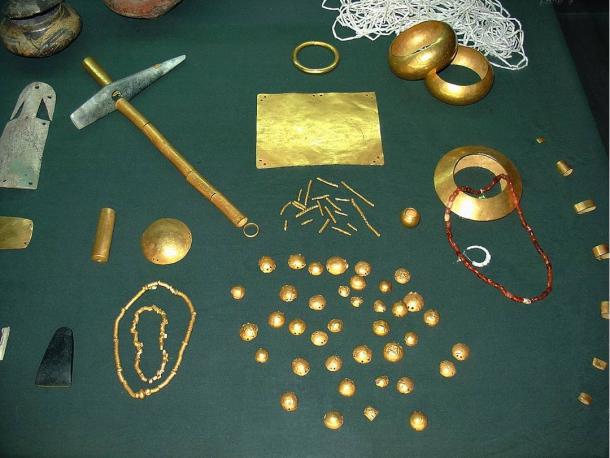In 1972, while digging a trench for electrical wires, Rycho Marinov unintentionally discovered what is considered the oldest gold treasure known in the world today. It is nicknamed the Varna Gold after the site where it was unearthed.

The Varna Necropolis, a gravesite in Varna, Bulgaria, is an ancient burial ground dating back to approx. 4500 BC (over 6500 years old!). It is here where numerous man-made gold artifacts, along with other incredible and historical relics were found.
The find challenged history. It was believed by most archaeologists, that the time for when the graves dated back to, only small groups existed. These small groups were not believed to have been very well organized and were thought to live a simple life.

However, as excavations continued at Varna Necropolis, it became clear this maybe wasn’t the case. Graves revealed a social hierarchy, and suggested there was a male leadership responsible for ruling and regulating a community of people living there. It seemed there was a sophisticated division of those who were laborers, and those ruling.

The graves were showing a more established society of people lived during the time. Excavations of the grounds uncovered that only a small number of burials held the majority of all the gold artifacts found. Most of the graves consisted of very little wealth or gold inside them. This variance highly suggests a separation and ownership of wealth amongst the community.
One of the most remarkable graves, Grave 43, included a male skeleton adorned with an abundance of gold artifacts. Gold beaded necklaces, gold earrings, gold pendants, gold bracelets, gold sheath for his penis, and other decorative gold relics, were worn by this presumably important member of the community. He is known to have sported some of the world’s oldest gold jewelry ever crafted.

While Grave 43 presented an elaborate and expensive burial, with a spectacular display of wealth, it was of the few. As mentioned, most of the graves of the Varna Necropolis, over 300, (with more to be excavated yet today), contained only a few items, if any of gold. Still, though, the site offers a glimpse into one of the earliest known buried and found treasures of gold.

A great mystery for the site exists, however. It is the question on what happened to the people living there? The grave site covers a span of a few hundred years (4200BC-4600BC), and then nothing. Further excavations of this area, and other surrounding areas, show settlements abruptly ending. The people of the time vanish without leaving clues for why they were leaving. There are not any signs of battles, land depletion, or widespread illnesses, and other explanation or evidence for why they left, is missing.
It is one mystery which might never become solved.
source: mysteriouswritings.com








